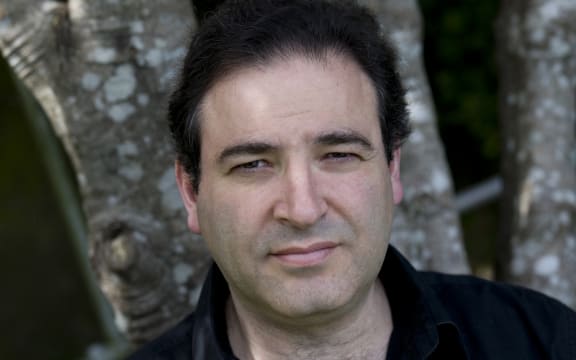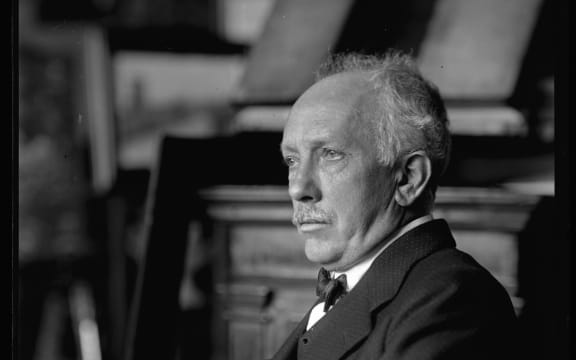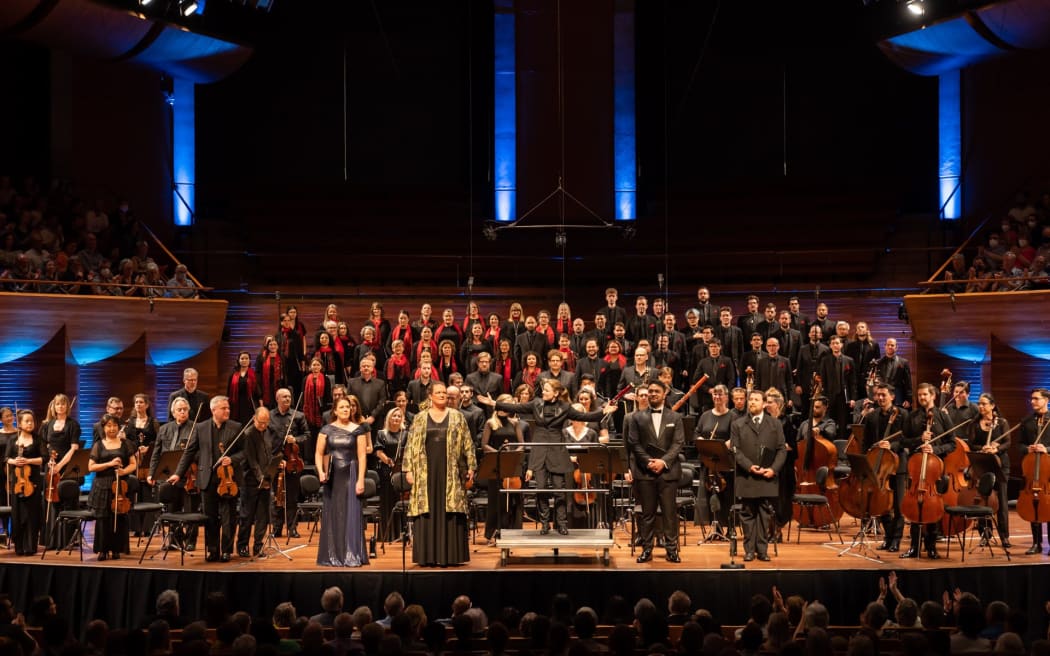This concert explores the big questions of life and death through works by John Psathas, Richard Strauss and Mozart - composers who have all grappled with these universal themes in profound and inspiring ways.
Gemma New conducts the New Zealand Symphony Orchestra.

Composer John Psathas Photo: Gareth Watkins
John Psathas’ Seikilos is a challenge to seize the day – life is short and you should make the most of it!
Psathas dedicated the work to his Greek parents.
Seikilos refers to a Greek composer who lived during the first or second centuries BC. One of the few remnants of ancient Greek music is the song Seikilos engraved on his wife’s tombstone as her epitaph, singing out over the centuries as a reminder to us all.
While you’re alive, shine, man
Don’t be the least bit blue.
Life’s for a little span;
Time demands its due.
John Psathas had this life lesson in mind while writing the music for Seikilos. Being a NZ Greek composer has led to a lifelong fascination with what he describes as “the endless motion of restless people throughout history”. And this fascination is echoed in the energy of his piece Seikilos, which focuses on percussion and rhythm.

Richard Strauss Photo: Wikicommons
Richard Strauss’ tone poem Tod und Verklärung (Death and Transfiguration) is music that seeks to transcend earthly suffering.
Strauss was 24 years old and working as a vocal coach and pianist for a Bayreuth Festival Wagner production when he began work on the music that would become his tone poem Death and Transfiguration. Once he had completed the music, he asked a poet friend to write a brief poem based on the theme of earthly travail leading to heavenly bliss. At Strauss' request, the poem was expanded by the poet Ritter into a full scale dramatic road map for the piece.
The programme follows suffering of an artist who lies dying in a shabby room. You can hear his weak heart-beat or maybe the ticking of a clock in the strings and timpani. A melancholy smile appears on his face as he thinks back on his childhood. Then comes a furious struggle between life and death, at whose climax we hear, briefly, the theme of Transfiguration that dominates the final portion of the work. The struggle is unresolved, and silence returns.
The heavens open to show him what the world denied him, Redemption, Transfiguration - the Transfiguration theme first played pianissimo by the full orchestra, its flowering enriched by the celestial arpeggios of two harps. The theme climbs ever higher, as his soul is dazingly transfigured in the afterlife.

Anna Leese, Rhonda Browne, Amitai Pati, Robert Tucker, Voices New Zealand, NZSO conducted by Gemma New after performing Mozart's Requiem Photo: Latitude Creative/NZSO
Performed by Anna Leese (soprano), Rhonda Browne (alto), Amitai Pati (tenor), Robert Tucker (bass) with Voices NZ Chamber Choir and the New Zealand Symphony Orchestra conducted by Gemma New.
Death wasn’t an abstract idea for Mozart. It pursued him from birth until his death in 1791, the most productive and successful year of his life. He was the youngest of 7 children, five of whom died in infancy. Of his own six children, only two survived and he also felt keenly the loss of both his parents, particularly his mother who died quite suddenly. He developed such a knowing relationship with death that it no longer terrified him. In fact, he came to consider death as humanity’s best and truest friend.
In 1791, a stranger visited Mozart and offered him a secret commission – a Requiem. Needing the money, Mozart accepted but died before he could complete it - the score breaks off in the eighth bar of the Lacrymosa, perhaps the saddest and most beautiful part of the Requiem.
His sister-in-law, Sophie documented Mozart’s final hours in a letter. Knowing he’d been unwell and beset by an ominous feeling, she rushed to his house and found him in bed. Glad to see her, Mozart asked her to stay with him and watch him die. Sophie tried to be brave and persuade him to the contrary, but he only replied: “Why I already have the taste of death on my tongue…”
Mozart’s friend Suessmayr was at his bedside and the Requiem lay on the quilt. Mozart was instructing him how to he ought to finish it, when he was gone. Mozart’s last movement was an attempt to mouth the drum passage in the Requiem, which haunted Sophie who continued to hear it well after his death.
Mozart’s 25-year-old student and assistant Franz Suessmayr had the difficult job of completing the work and his version has stood the test of time.
Period Instruments
The NZSO's two new basset horns feature in this performance, together with alto trombone and baroque timpani.

Rachel Vernon and John Robinson with NZSO’s new basset horns, David Bremner with alto trombone, and Larry Reese with baroque timpani. Photo: David McCaw
Recorded 18 November 2022, Michael Fowler Centre, Wellington by RNZ Concert
Producer: David McCaw
Engineer: Darryl Stack

